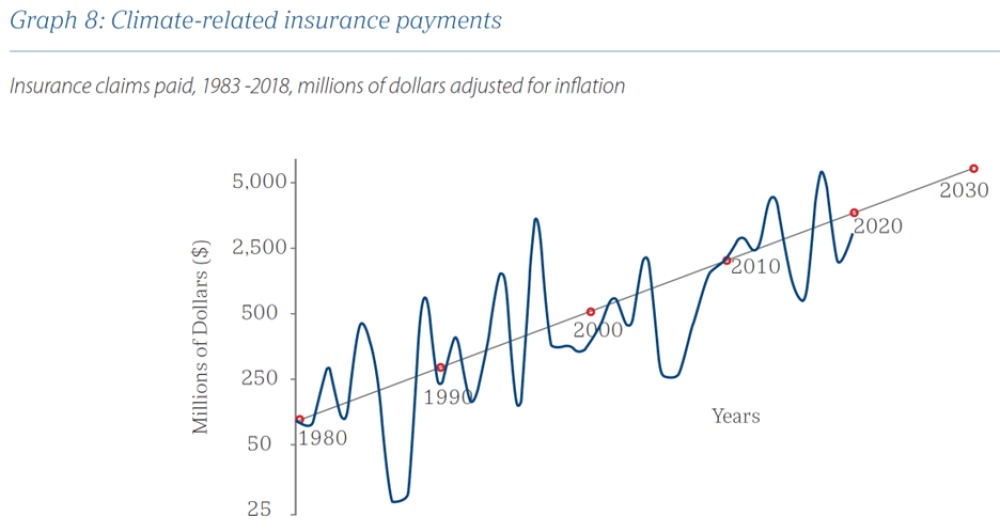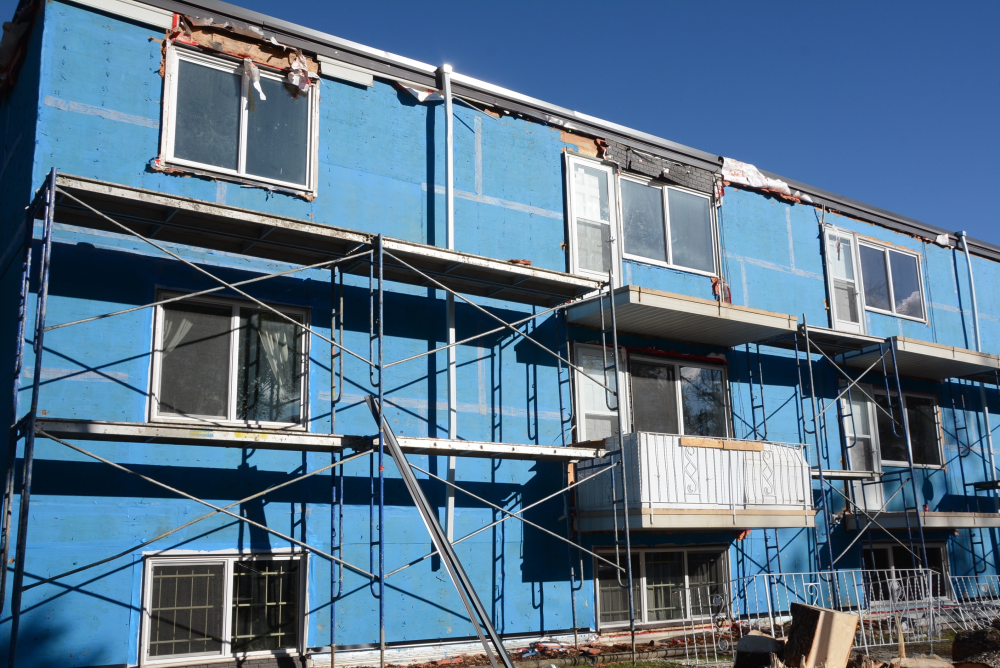In order to ensure the climate-resilience of Canada’s privately owned homes and buildings, they need to be explicitly included in the National Adaptation Strategy.
The first iteration of Canada’s National Adaptation Strategy, released in November 2022, outlines a plan for more climate resilient infrastructure, communities, economy and workers. It includes funding for public buildings and maintaining more resilient public infrastructure like roads, bridges and sewers. All important components of adapting our communities to withstand increasingly more extreme weather.
But missing in this plan are strategies to adapt the buildings where Canadians spend 90 per cent of their time from extreme, heat, cold, flooding and forest fires.
Canada’s Green Buildings Strategy is being developed to chart a buildings decarbonization pathway that includes homes and buildings. And while making them climate-resilient is part of this strategy, it is not the primary priority. By not explicitly addressing market housing and buildings in the National Adaptation Strategy, it misses the opportunity to ensure holistic integration of strategies to adapt the places where Canadians live, work and play.
According to Environment and Climate Change Canada, extreme weather events in 2021 were the worst Canadians have endured in the 26 years the agency has been reporting Canada’s top 10 weather events. The events of 2021 cost Canadians and the economy billions of dollars.
The cost of not being ready
Over 600 people died in June and July 2021 in B.C. from heat-related conditions in their homes and places of care as a result of just one extreme heat event. The Insurance Institute of Canada reported that severe weather claims paid by Canada's insurance industry have doubled every five to 10 years. And those dollar values do not capture the costs to human health and life, or the costs not covered by insurance.

Climate Institute of Canada
As the world gets closer to 1.5 degrees C of warming above pre-industrial temperatures, we need to implement strategies that not only contribute to reducing global warming, but also ensure we are protected from extreme weather, which is increasing in severity and frequency due to global warming.
Deep retrofits can do double duty
Deep retrofitting Canada’s homes, offices, schools and industrial buildings achieves more than just increasing energy efficiency and reducing emissions. The processes and technologies that achieve these core priorities can do so much more.
Transitioning homes from gas-powered furnaces to more efficient, reliable heat pumps that provide homes with both heating and cooling can keep residents safe from extreme temperatures while keeping utility bills affordable. Efficiency Canada has proposed making cooling during extreme heat events a tenant right in a suite of recommendations to provide the benefits of improving buildings housing low-income Canadians.
Increasing insulation and sealing leaky building enclosures helps reduce heat loss and costs associated with heating buildings. During power outages caused by extreme storms or cold weather, a well-insulated, sealed building stays warm while heating systems are offline.
Improving ventilation and air filtration helps ensure people living in areas with poor outdoor air quality from pollution or forest fires can continue to draw in fresh air at times when opening a window would make indoor air quality worse. This is particularly critical during extreme heat events.
Deep retrofits can also provide opportunities to protect critical equipment and keep them up and running during extreme weather, by moving them to locations in a building where they are not vulnerable to the impacts of events like floods or fires.
Now is the time to act
The time is now for Canada to look at homes and buildings not only as a key sector for reducing our emissions, but also as a critical line of defence for protecting Canadians against extreme weather.
The massive investments in clean electricity, clean technology manufacturing and adoption, and infrastructure promised in the 2023 Federal Budget will lay the groundwork for low-carbon industrial investment in Canada, ensuring Canada’s electrical supply and grid are ready to decarbonize everything from buildings to transportation to energy production.
The Budget follows through on National Adaptation Strategy commitments to carry out flood mapping and provide Canadians living in flood-vulnerable areas access to low-cost insurance. But Canadians also need help protecting themselves against the impacts of heat waves, wildfires, droughts and other increasingly common weather events.
Actions under the National Adaptation Strategy need to evolve in coordination with Canada’s Green Building Strategy in making sure market sector homes and buildings are healthy, safe and net-zero. These actions should include:
- Mapping all climate risks communities face throughout Canada, not just flooding, and developing pre-emptive strategies to ensure people are able to quickly recover from extreme weather events.
- Setting home and building adaptation upgrade targets, such as setting a minimum number of safe temperature hours during a power outage in a cold snap and working together with provincial, territorial and municipal governments, and Indigenous leadership on adopting and meeting those targets in tandem with net-zero emissions efforts.
- Supporting development of climate-secure building codes and facilitating code implementation by provinces and communities to help make adaptation a priority, long after the memories of an acute event begin to fade.
- Helping communities, home and building owners, and industry learn how to identify vulnerabilities and assess local and regional risks and take steps toward adapting new and existing buildings to new climate realities.
- Supporting industry capacity growth, training and up-skilling to implement new standards for climate-secure buildings.
Ultimately, this comes down to strengthening Canada’s National Adaptation Strategy and ensuring other major government initiatives are well-integrated, such as the Canada Green Buildings Strategy and building code development. This will accelerate preventative adaptation, including in market homes and buildings.










